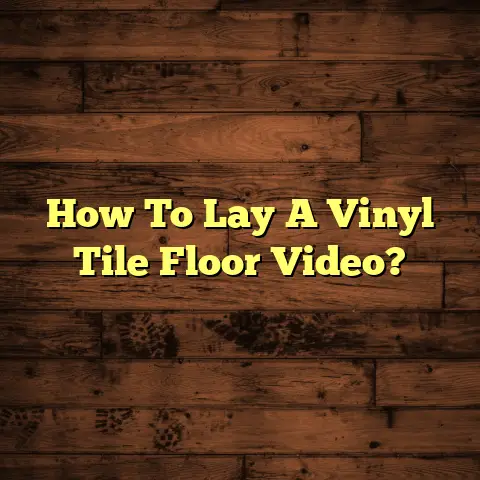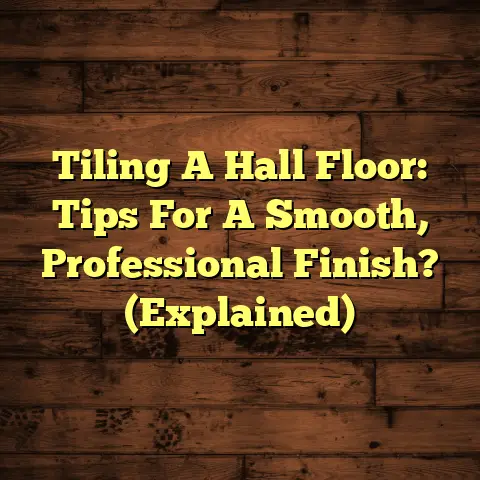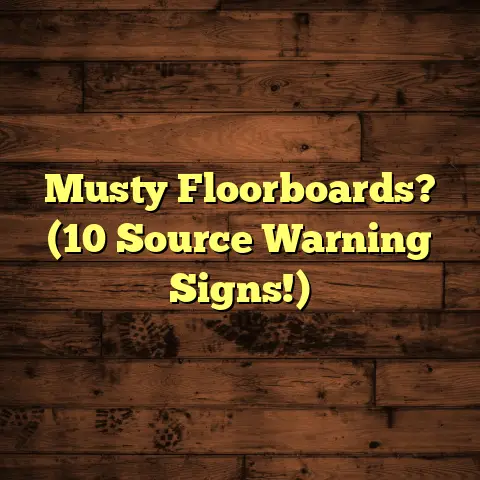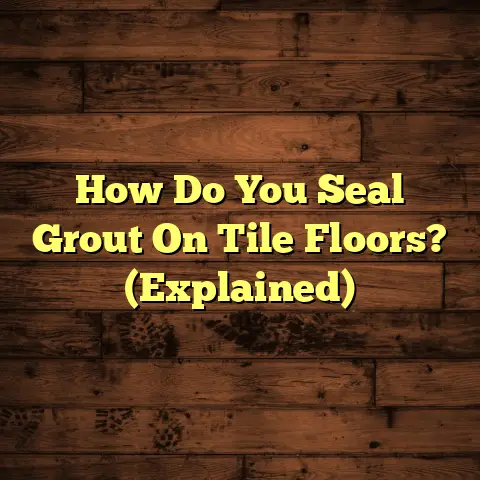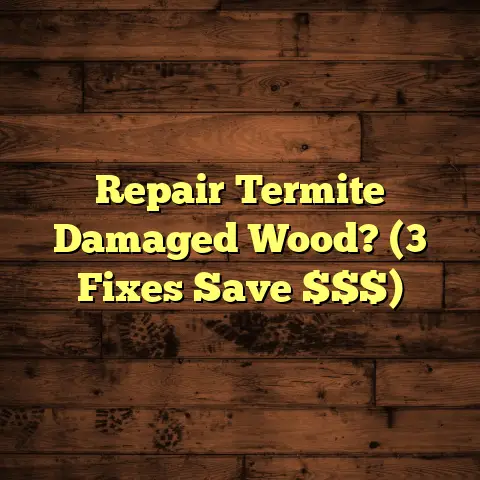Basketball Wood Flooring Cost (Explained)
Installing hardwood flooring in basketball courts is a significant investment that requires careful consideration of various factors.
This article provides a comprehensive overview of the costs associated with hardwood flooring installation, particularly in sports facilities.
We will explore major cost factors, detailed breakdowns for different project scopes, comparisons with alternative flooring options, and insights into maintenance and care.
Major Cost Factors
1. Area Size
The size of the area where the hardwood flooring will be installed is the primary factor influencing cost.
Larger areas naturally incur higher material and labor costs.
For example, gymnasiums can range from 5,000 to over 15,000 square feet, which significantly impacts the total budget.
2. Hardwood Type
Different types of hardwood vary in price. Common choices for basketball courts include:
- Maple: The most popular choice due to its durability and resilience against wear and tear.
Prices typically range from $5 to $8 per square foot. - Oak: Offers a robust option but is less common in sports applications.
Costs can range from $4 to $7 per square foot. - Cherry: Not typically used for basketball courts due to its softness, but available at $6 to $10 per square foot.
3. Labor Costs
Labor costs can vary significantly based on location, contractor experience, and installation complexity.
Professional installation typically costs between $3 to $6 per square foot.
It’s essential to hire contractors experienced in sports flooring due to the specific requirements for performance and safety.
4. Additional Considerations
Several additional factors can influence overall costs:
- Floor Removal: If existing flooring needs removal, this can add an extra $1 to $2 per square foot.
- Subfloor Replacement: Depending on the condition of the subfloor, costs can range from $1 to $5 per square foot.
- Material Grade: Higher-grade materials with fewer defects will cost more.
- Room Size/Layout: Unique layouts or custom designs (like logos or specific court markings) will incur additional charges.
- Installation Type: Traditional nail-down methods are more time-consuming than floating installations, impacting labor costs.
Detailed Cost Breakdown
Here’s a detailed cost breakdown for different project sizes:
Note: Prices are based on average market rates and may vary by region.
Comparison with Alternative Flooring Options
When considering hardwood flooring for basketball courts, it is also essential to compare costs with alternative flooring options:
While hardwood offers superior durability and aesthetic appeal for basketball courts, alternatives like laminate and vinyl are less expensive but may not provide the same performance characteristics required in athletic settings.
Signs That Hardwood Floors Need Replacement
Recognizing when it’s time to replace hardwood floors is crucial for maintaining safety and performance:
- Severe Scratches and Gouges: Deep damage that cannot be refinished.
- Warping or Buckling: Often caused by moisture issues that compromise structural integrity.
- Prolonged Discoloration: Indicating wear beyond repair.
- Persistent Odour or Moisture Issues: Suggesting underlying damage.
Refinishing vs. Replacement
Deciding whether to refinish or replace hardwood flooring depends on the extent of damage and desired aesthetics:
- Refinishing is generally viable if the surface has minor scratches and wear but is structurally sound.
- Replacement is necessary when dealing with extensive damage beyond repair or when upgrading to a higher-quality wood type.
Pros and Cons of Hardwood Flooring
Pros
- Durability: With proper care, hardwood flooring can last for decades.
- Aesthetic Appeal: Offers a classic and professional look suitable for sports venues.
- Resale Value: Increases property value due to its desirability.
Cons
- Cost: Higher upfront expenses compared to alternatives.
- Maintenance Requirements: Regular upkeep needed to maintain appearance and longevity.
- Sensitivity to Moisture: Must be monitored closely in athletic environments.
Professional Installation vs. DIY
Cost Differences
Hiring professionals generally ensures better quality installation but comes at a higher cost.
DIY might save money but requires:
- Tools and Equipment: Saws, nail guns, sanders—costing anywhere from $200 to over $1,000.
- Skills and Experience: A lack of expertise could lead to improper installation.
Importance of Proper Installation
Professional installers ensure proper moisture control and alignment, reducing long-term issues that could arise from improper installation.
Questions to Ask Hardwood Flooring Contractors
When hiring a contractor for your hardwood flooring project, consider asking the following:
- What is your experience with hardwood flooring installations?
- Can you provide references or examples of completed projects?
- What types of wood do you recommend for my specific needs?
- How will you handle moisture issues during installation?
- What warranties or guarantees do you offer?
Hardwood Floor Care and Maintenance Tips
To maximize the longevity of hardwood floors in basketball courts:
- Regular Cleaning: Sweep or vacuum regularly to remove dirt and debris.
- Moisture Control: Maintain humidity levels to prevent warping or buckling.
- Use Appropriate Products: Only use cleaners specifically designed for hardwood flooring.
- Refinish as Needed: Schedule refinishing every 5-10 years based on usage.
Conclusion
Investing in hardwood flooring for basketball courts is a significant decision that involves various costs and considerations.
By understanding the factors affecting costs—such as area size, wood type, labor expenses, and alternative options—decision-makers can make informed choices that align with their budgets and performance needs.
Whether opting for professional installation or taking on a DIY project, ensuring quality workmanship and maintenance will lead to long-lasting and visually appealing results.
